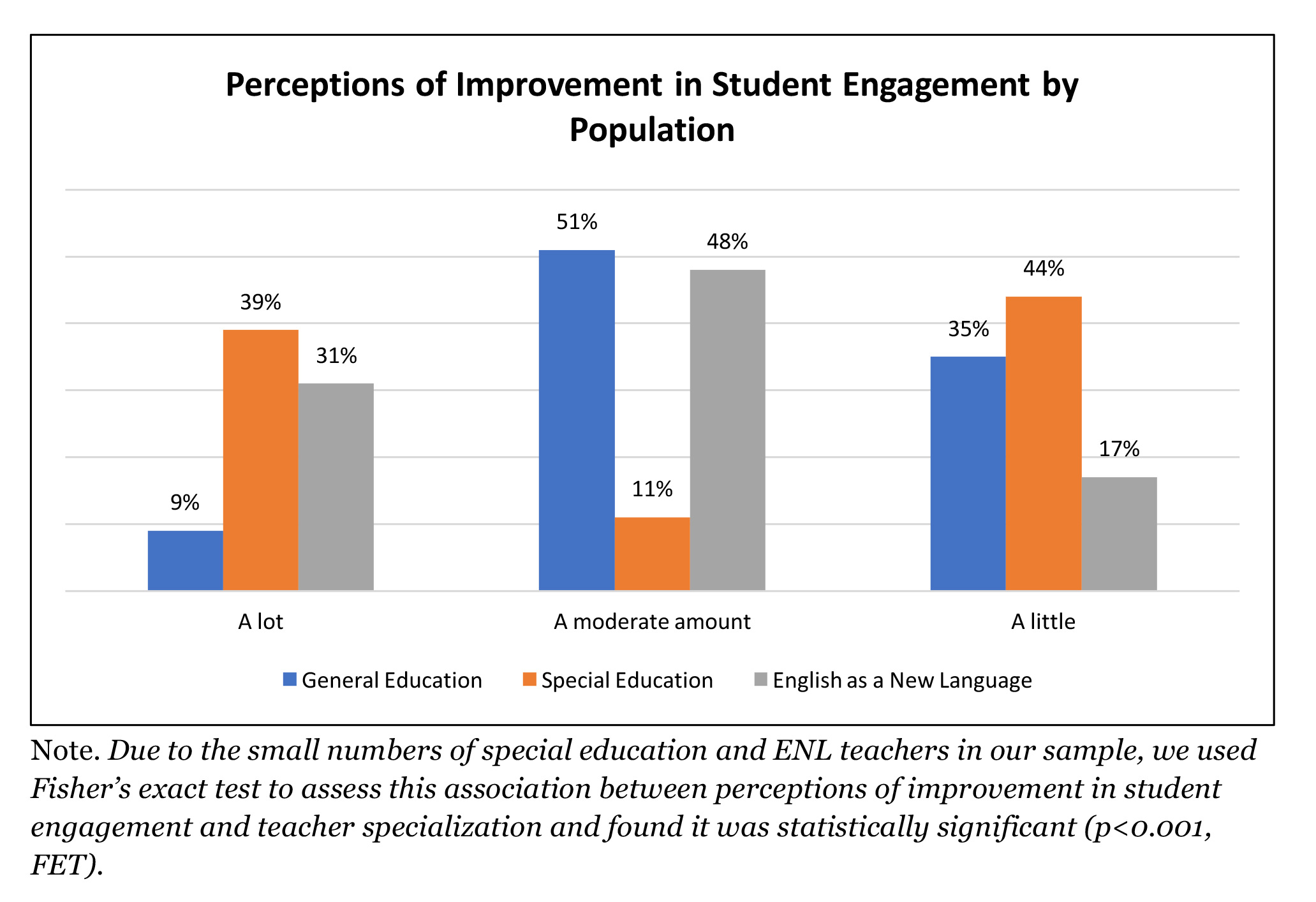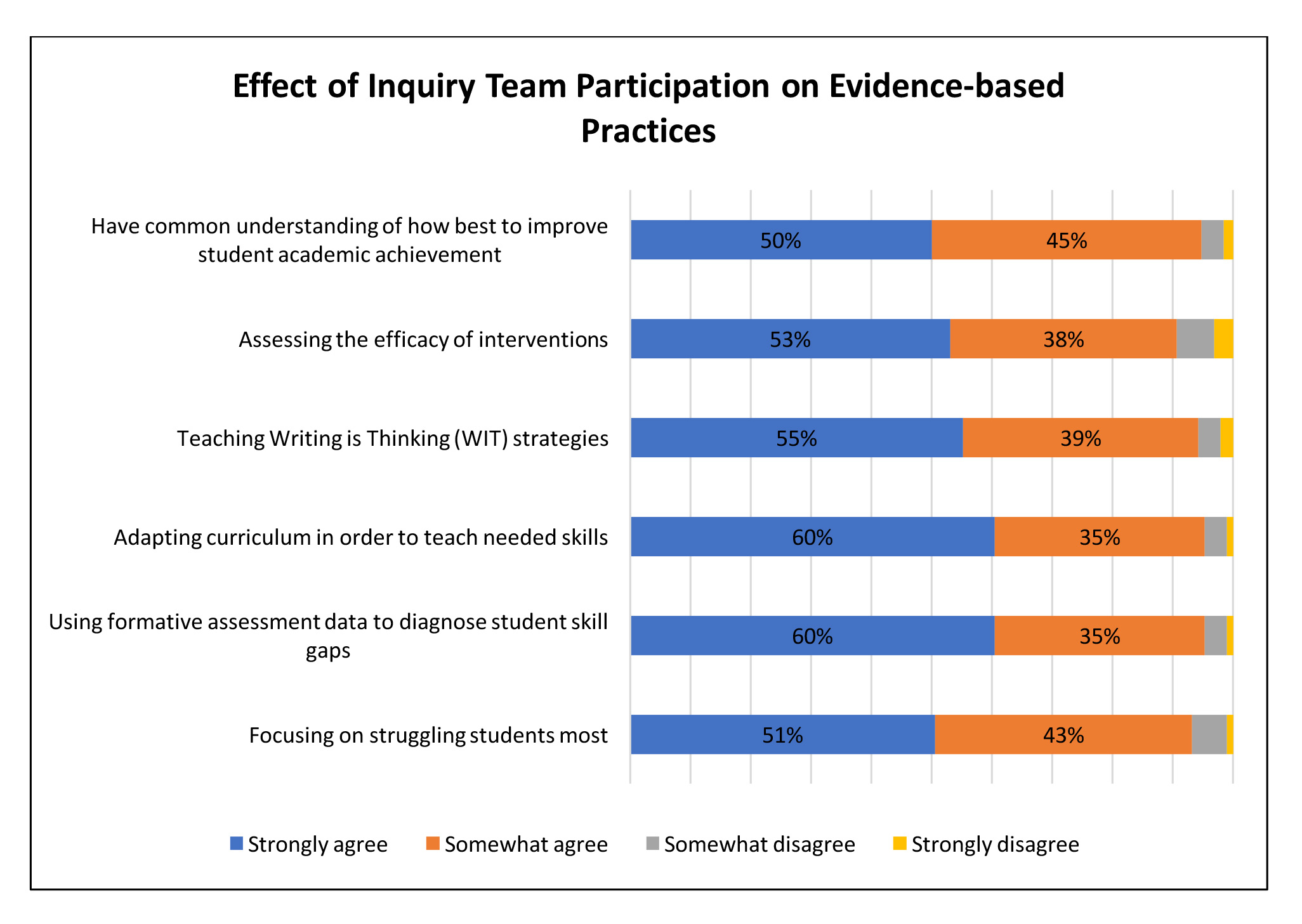A recent study by researchers at Teachers College shows promising results for a school turnaround model in which teams of teachers and administrators study their own schools to identify an essential skill gap for a group of struggling students, investigate how school-wide learning conditions allow this gap to persist, and design and implement a strategic system change.
The study was published in December by Priscilla Wohlstetter, Distinguished Research Professor in the Department of Education & Social Analysis, and two co-authors at Teachers College. The team found that New York City high schools that used the Strategic Inquiry method of school-wide reform from 2014 to 2016 showed positive changes in student performance, school culture, more leadership interest and development among teachers.
The high schools were in the City’s Renewal Program, Mayor Bill de Blasio’s $773 million effort to turn around struggling high schools which included providing the schools with additional funding and support from the City’s Department of Education in an effort to improve student outcomes. The Renewal Program was designed to run through 2019, but in October, de Blasio announced that he would shut it down early, following criticisms that it was expensive and ineffective.
But Wohlstetter and her team found that some aspects of the Renewal program associated with Strategic Inquiry were tied to positive results.

“Our research findings show promising results from Strategic Inquiry and challenge conventional wisdom about New York City’s Renewal program by suggesting there are successful components worth pursuing and adopting elsewhere,” Wohlstetter said. “We found that Strategic Inquiry was associated with improved student performance and school culture results in a low cost, minimally resource-intensive manner.”
All 33 of the Renewal high schools in New York City have used the Strategic Inquiry model. Using a mixed-method research strategy, Wohlstetter and co-authors Elisabeth Kim and Clare Buckley Flack interviewed and surveyed individuals involved with Strategic Inquiry in four Renewal High Schools. They analyzed administrative data from the New York City Department of Education (NYCDOE) and New York State, comparing 29 Renewal high schools that implemented SI to 334 similar schools that were not in the Renewal program and did not use the Strategic Inquiry method.
The team found that, after accounting for differences among students, those in schools that used Strategic Inquiry were nearly two-and-a half times more likely to be on track to graduate and less than half as likely to be off track to graduate, compared with students in schools that did not use the method. Those determinations were based on the number of credits students had earned toward graduation and how many New York State Regents Exams students had passed.
In the four case study schools, Strategic Inquiry was also associated with improvements in student engagement, particularly for special education and English Language Learning students, “an extraordinary result given the difficulty in reaching these groups,” the authors write.

The team found that, after accounting for differences among students, those in schools that used Strategic Inquiry were nearly two-and-a half times more likely to be on track to graduate and less than half as likely to be off track to graduate, compared with students in schools that did not use the method. Those determinations were based on the number of credits students had earned toward graduation and how many New York State Regents Exams students had passed.
Strategic Inquiry was also associated with improvements in student engagement, particularly for special education and English Language Learning students, “an extraordinary result given the difficulty in reaching these groups,” the authors write.

They found that schools in the study displayed positive trends in the New York City Department of Education’s measures of school culture such as trust, teacher collaboration, effective school leadership, rigorous instruction, and supportive environment.
At the student level, the Strategic Inquiry model helps empower teacher teams to identify specific students who have been underperforming in school, diagnose the problem, and design and implement a customized plan to improve performance. At the same time as helping individual students, it is designed to help improve systems across schools and districts that have contributed to those students’ challenges.
In addition, the researchers found that:
- Teachers reported engaging in more evidence-based practice as a result of participation on inquiry teams. These practices included using tests to identify student skill gaps and designing targeted interventions to address them, adapting curriculum in order to teach needed skills, teaching writing strategies, focusing on struggling students most, and assessing the efficacy of interventions. They note that these gains were observed when the schools were “only in Year 3 of implementation in a time frame that is designed for five years.”

- The Strategic Inquiry model was associated with outcomes similar to those of earlier, costlier versions of the program, “strongly suggesting” that the model was “just as effective in shifting school culture and improving student performance” as more expensive interventions, the authors write. This finding was based on comparing two forms of implementation of Strategic Inquiry: an earlier version in which paid consultants did all the training, and a less costly “train the trainers” approach in which fewer consultants trained school district staff, who then trained the teachers.
Wohlstetter said the results also showed that the Strategic Inquiry approach could be “replicated, customized and adopted in school districts throughout the country as one important component of education improvement reform.”